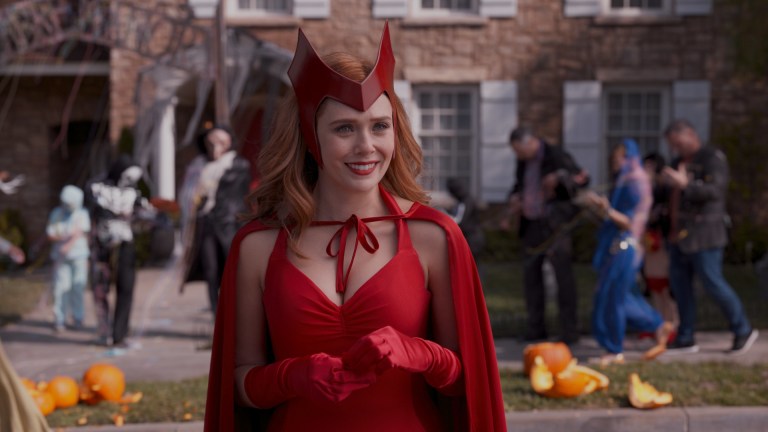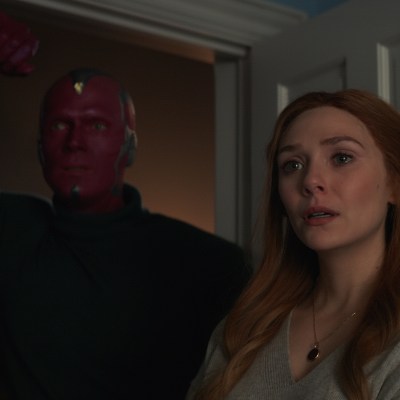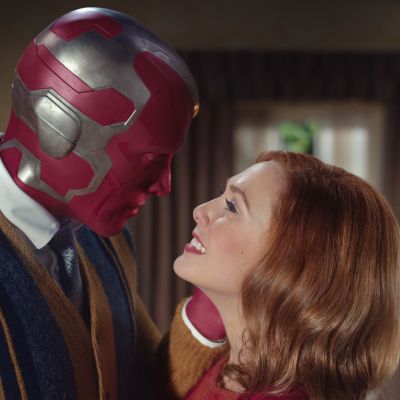How WandaVision Has Blazed a New Path for Women in the MCU
The success of WandaVision proves that the future of the MCU is female.

This article contains WandaVision spoilers.
The Marvel Cinematic Universe doesn’t exactly have a great track record with female characters. There, I said it. Because despite the fact that these films feature some of Marvel Comics’ most recognizable women in Natasha Romanoff, Carol Danvers, Gamora, Janet Van Dyne, and Jane Foster, too many of these characters are often still stuck languishing on the sidelines, serving as love interests or plot devices, and sometimes both, if they’re lucky.
The various Marvel television series have made much-needed progress in this area – thank you Netflix’s Defenders universe and ABC’s Agents of SHIELD – but there’s still plenty of work to do. Out of the twenty-plus Marvel feature films, only one has been headlined by a female character (Captain Marvel), though that number will rise to a whopping two whenever Black Widow manages to get released. Hope Van Dyne got her name in the title of Ant-Man sequel Ant-Man and the Wasp, but the film’s story was still primarily about Scott Lang (and let’s not even talk about how that movie treated its female villain). Avengers: Endgame gave us a brief lady superhero team-up that somehow managed to feel both deeply pandering and desperately needed, but not before it basically fridged the first female Avenger.
Two steps forward, one step back seems to be an unfortunate mantra for the MCU when it comes to not just including female characters, but truly building stories around them. But with the arrival of WandaVision, it feels as though that may at long last be changing.
The series centers one of the franchise’s most often ignored heroines in Scarlet Witch Wanda Maximoff and uses its sitcom-parody format to give her character the depth and agency that her roles in four separate feature films have lacked. It’s a tremendous and long overdue journey for a woman that these movies have generally treated as an afterthought and whose (seemingly unending) pain was largely used to drive story for other characters.
But the show also does more than that: WandaVision proves that the Marvel universe can not only frame a compelling narrative around a powerful woman, it is also capable of telling an explicitly female-focused story about love, relationships, and emotional pain. And, just as importantly, it’s a story that actually feels as though it will have lasting consequences that reverberate throughout the larger MCU. While other female-focused series like Agent Carter and Jessica Jones dealt with issues of grief and trauma, they were also stories that took place in largely self-contained bubbles and, rightly or wrongly, had little impact on the larger franchise universe.
It’s not an accident that WandaVision is primarily a story about women. Wanda may be its central figure, but she’s surrounded by a group of equally complicated female characters whose stories play important roles in the larger narrative. Monica Rambeau is also struggling through the loss of the most important person in her life, attempting to figure out what her world will look like afterward. Agatha Harkness may be taking advantage of Wanda’s grief for her own ends, but she also knows something about living in a world that is all too eager to turn on powerful women. Even Darcy Lewis gets several key moments to shine, at last presented as a brilliant scientist in her own right instead of a ditzy sidekick.
But despite its charmingly bizarre sitcom framework, WandaVision is at its heart a story of love and loss. Wanda may be a legendary witch, but she is also a woman who is grieving, and her decision to mind control a run-down New Jersey town stems not from a desire for power, but peace. She is the strongest Avenger, but when given the opportunity to remake the world to her whims, she chooses the chance at a life and family with the man she loves.
Such domestic yearnings are almost certainly not the choice that other female Marvel heroes such as Natasha Romanoff or Carol Danvers might make, but WandaVision doesn’t judge or belittle Wanda for these dreams. In fact, it takes the time to understand her choices, digging deep into her lifetime of trauma in a way that explains her bone-deep longing for a home and a place to belong, but never once calling her weak for having those dreams.
In fact, the show repeatedly underlines that it is Wanda’s most stereotypically feminine traits – her love, her grief, her maternal instinct, her connection to her emotions – that actually make her stronger and more powerful than she otherwise ever might have been. Whether that will turn out to be for good or ill is a question that future movies and/or series will have to answer, but for now, it’s enough to know that WandaVision has given the Scarlet Witch both the opportunity to come to terms with who she is and the agency to finally choose who she will become.
And as we look toward Phase 4 of the Marvel Cinematic Universe, with its looming stories of cosmic adventures, space battles, magic, and (most likely) mutants, there can be no better roadmap for the franchise to follow than this little weirdo show that so perfectly encapsulates why we tell stories like this in the first place. WandaVision wasn’t even originally supposed to lead off the newest round of Marvel properties, and yet, looking back, it seems inevitable: A story that features rich emotion, meaningful stakes, and the sort of thorny ethical dilemmas that comic book stories are so uniquely positioned to explore. And which explicitly and unashamedly centers powerful women.
While the MCU may not have the best historical record in this area, it also has plenty of opportunities for meaningful change in its future. Wanda herself will play a big role in the upcoming sequel Doctor Strange in the Multiverse of Madness and the WandaVision post-credits scene certainly seems to indicate that it won’t be as a sidelined supporting character.
Female characters are taking on more expansive new roles in films like Guardians of the Galaxy 3 (a Gamora who never experienced her time with Quill), Thor: Love and Thunder (a Jane Foster who will wield Mjolnir), or Black Panther 2 (a Shuri who will likely take up her brother’s mantle). Upcoming Disney+ series like Hawkeye, Ms. Marvel, and She-Hulk are all centering women in a variety of intriguing new ways. In short, there’s more opportunity than ever before for Marvel to correct the mistakes of its past and forge an exciting new future when it comes to female representation and the stories it chooses to tell. And if we’re lucky, that future will be one that follows in the footsteps of this strange, beautiful show that wasn’t afraid to wear its heart on its sleeve, and put the stories of female characters first.


